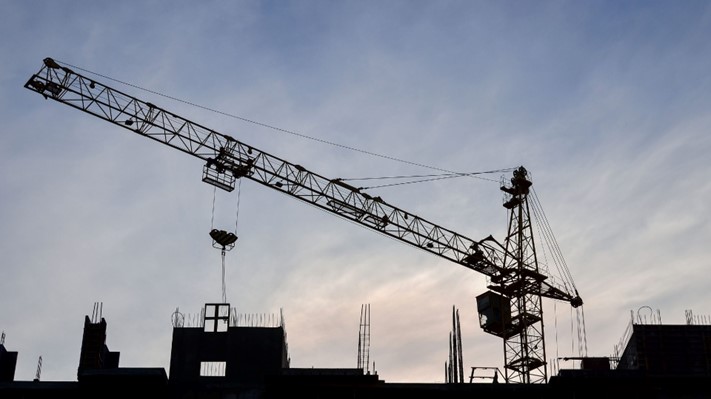Taking on a construction project can be an exciting but financially demanding endeavour. Whether you plan to build your dream home or undertake a commercial construction project, securing the necessary funds is a crucial first step.
One financing option for such ventures is a construction loan. In this comprehensive guide, we’ll walk you through the process of obtaining a construction loan, covering everything from preparation to loan disbursement.
1. Understanding Construction Loans
Before delving into the application process, know what a construction loan is. Unlike traditional mortgages used to purchase an existing home, construction loans help finance the construction or renovation of a property. These loans often have a shorter term and differ in fund disbursement.
2. Determine Your Budget and Project Scope
Set a detailed budget before obtaining a construction loan. Work closely with an architect and a builder to estimate the costs involved. These costs include construction materials, labour, permits, and contingency funds for unforeseen expenses. Clearly define the scope of your project, outlining your needs and preferences.
3. Check Your Credit Score and Financial Health
Lenders consider construction loans riskier, so a strong credit score is crucial. Check your credit report for any inaccuracies and take steps to improve your credit if needed. Lenders will also assess your debt-to-income ratio, so reducing outstanding debts before applying for a construction loan is advisable.
4. Research Lenders and Loan Types
Not all lenders offer construction loans, so researching and identifying financial institutions that specialise in or provide such loans is essential. Explore different loan types, including construction-to-permanent loans that convert to a traditional mortgage after a finished construction project. Compare the offered interest rates, terms, and fees to find the best fit for your financial situation.
5. Gather Necessary Documentation
Prepare a detailed documentation package to back up your loan application. This document should include financial statements, tax returns, proof of income, building plans, project specifications, and a detailed construction timeline. Providing a thorough and well-organised set of documents can significantly expedite the loan approval process.
6. Submit Loan Application
Once you have selected a lender and gathered all necessary documents, it’s time to submit your loan application. Be prepared for a thorough review process, as lenders scrutinise construction loan applications more closely than traditional mortgages due to the inherent risks. Ensure that your application is accurate and complete to boost your chances of approval.
7. Appraisal and Approval Process
After receiving your application, the lender will prepare a property appraisal to assess its current and future value. This step is critical, as they will establish the loan amount on the appraised value of the completed project.
Once the appraisal is complete, the lender will assess your application, considering factors like your financial stability, creditworthiness, and the viability of the construction project.
8. Loan Agreement and Closing
The lender will provide a detailed loan agreement outlining the construction loan’s terms and conditions on approval.
Carefully review the agreement, seeking clarification on any terms you find unclear. Once both parties are satisfied, the loan can move to the closing stage. During closing, you’ll sign the loan documents, and the lender will disburse an initial amount to cover land acquisition or construction costs.
9. Construction Begins: Draw Requests and Inspections
With the loan secured, construction can commence. However, unlike traditional mortgages, where they disburse the entire loan amount upfront, they typically allocate construction loans in instalments, known as draws.
You’ll need to submit draw requests to the lender at various stages of the construction process, such as foundation completion, framing, and project completion. The lender may conduct inspections to ensure progressing work before releasing each draw.
10. Managing Contingencies and Changes
Construction projects come with unexpected challenges and changes. A contingency fund ensures you can address unforeseen expenses without jeopardising the project. If there are significant changes to the initial plans, communicate with the lender promptly to ensure that adjustments can be made to the loan terms if necessary.
11. Project Completion and Final Inspection
The lender will schedule a final inspection to ensure the project meets the agreed-upon specifications as construction approaches completion. The lender may ask for additional documentation, like certificates of occupancy and final contractor lien waivers. Once they deem the project complete, the construction loan can transition into a permanent mortgage.
12. Conversion to Permanent Mortgage
With a construction-to-permanent loan, the final step involves converting the loan into a long-term mortgage. This process eliminates the need for a separate closing for the permanent mortgage, streamlining the transition from construction financing to homeownership.
13. Ongoing Payments and Maintenance
You’ll begin making monthly payments based on the terms agreed upon in the loan agreement after the conversion to a permanent mortgage. Staying proactive in managing your finances is essential, ensuring you meet your mortgage obligations. Additionally, ongoing maintenance of your property is crucial to preserving its value and minimising the need for repairs in the future.
Securing a construction loan involves a detailed and multifaceted process that requires careful planning, documentation, and collaboration with various professionals.
By understanding each step of the process, you can navigate the complexities of obtaining a construction loan. Conduct thorough research, communicate effectively with your lender, and stay proactive in managing your project to ensure a successful and financially sound outcome.

